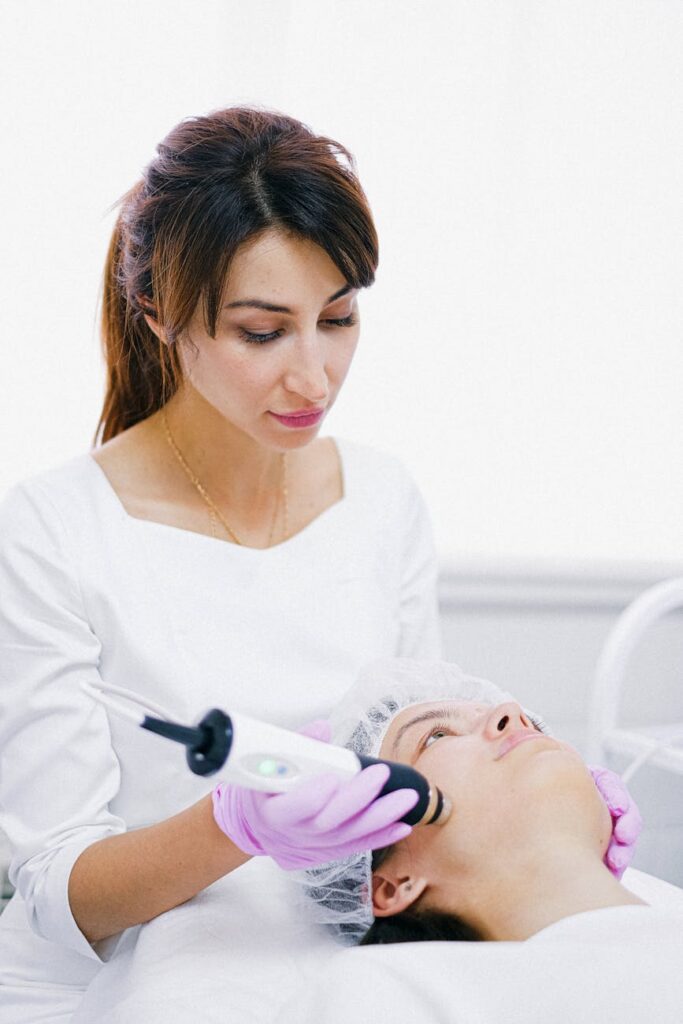Facial laser treatment has emerged as one of the most effective cosmetic procedures for achieving clearer, younger-looking skin. With advancements in dermatology and aesthetic medicine, laser treatments now offer solutions for a variety of skin concerns, including wrinkles, acne scars, pigmentation, and sun damage. This article provides an in-depth look at facial laser treatments, their types, benefits, risks, and aftercare to help you make an informed decision.
What is Facial Laser Treatment?
Facial laser treatment is a non-invasive or minimally invasive procedure that uses concentrated beams of light to target and improve skin imperfections. By directing laser energy at specific skin layers, this treatment stimulates collagen production, removes damaged skin cells, and enhances overall skin tone and texture.
Types of Facial Laser Treatments
There are several types of laser treatments, each designed to address specific skin concerns:
1. Ablative Laser Treatments
Ablative lasers remove the outer layer of skin (epidermis) and heat the underlying dermis, stimulating collagen production. These treatments are more intensive and often require downtime for recovery. Examples include:
- CO2 Laser: Effective for deep wrinkles, acne scars, and sun damage.
- Erbium Laser: Targets fine lines, age spots, and mild to moderate wrinkles with less downtime compared to CO2 lasers.
2. Non-Ablative Laser Treatments
Non-ablative lasers work by heating the underlying skin tissue without removing the outer layer. This results in collagen production and skin tightening with minimal downtime. Common non-ablative treatments include:
- Fraxel Laser: Reduces pigmentation, fine lines, and acne scars.
- Nd: YAG Laser: Used for skin tightening, reducing redness, and treating vascular lesions.
3. Fractional Laser Treatments
Fractional lasers deliver laser energy in tiny microbeams, creating small wounds that stimulate the body’s natural healing response. They are effective for wrinkles, scars, and pigmentation issues. Examples include:
- Fraxel Dual: Targets both pigmentation and skin texture.
- PicoSure Laser: Used for acne scars, tattoo removal, and skin rejuvenation.
4. IPL (Intense Pulsed Light) Therapy
While not technically a laser, IPL therapy uses light pulses to treat pigmentation, redness, and sun damage. It is a popular choice for individuals seeking a gentle yet effective skin rejuvenation treatment.
Benefits of Facial Laser Treatment
Laser treatments offer a range of benefits, making them a preferred choice for many seeking youthful and radiant skin.
- Reduction of Wrinkles and Fine Lines: Stimulates collagen production, leading to smoother skin.
- Treatment of Acne Scars: Breaks down scar tissue and promotes new skin growth.
- Correction of Pigmentation Issues: Reduces hyperpigmentation, sunspots, and melasma.
- Improvement in Skin Texture and Tone: Evens out skin tone and enhances smoothness.
- Minimized Pore Size: Reduces the appearance of large pores.
- Skin Tightening: Encourages firmer and more youthful-looking skin.
Who is a Good Candidate for Laser Treatment?
Facial laser treatments are suitable for individuals looking to address:
- Signs of aging, such as wrinkles and fine lines
- Acne scars or surgical scars
- Hyperpigmentation, sun damage, or melasma
- Uneven skin texture and enlarged pores
However, individuals with active acne, certain skin conditions, or darker skin tones should consult a dermatologist, as some laser treatments may not be suitable for them.
Risks and Side Effects
While laser treatments are generally safe, they do carry some risks and potential side effects:
- Redness and Swelling: Temporary redness and swelling may occur post-treatment.
- Hyperpigmentation or Hypopigmentation: Some treatments may cause skin darkening or lightening, especially in darker skin tones.
- Scarring: Rare but possible if post-treatment care is not followed properly.
- Infections: Although uncommon, improper care may lead to infections.
- Temporary Discomfort: Some patients experience mild discomfort or a stinging sensation during the procedure.
Pre-Treatment and Post-Treatment Care
Pre-Treatment Care:
- Avoid direct sun exposure for at least two weeks before the procedure.
- Discontinue the use of retinoids or exfoliating skincare products a few days before treatment.
- Stay hydrated and maintain a healthy skincare routine.
- Inform your dermatologist about any medications you are taking.
Post-Treatment Care:
- Apply soothing creams or prescribed ointments to reduce redness.
- Use sunscreen with SPF 30 or higher to protect treated skin.
- Avoid excessive heat, such as saunas and hot showers, for a few days post-treatment.
- Refrain from picking or peeling flaking skin to prevent scarring.
Cost of Facial Laser Treatments
The cost of facial laser treatments varies depending on the type of laser used, the severity of skin concerns, and the clinic’s location. On average:
- Ablative laser treatments: $2,000–$4,000 per session
- Non-ablative laser treatments: $500–$1,500 per session
- IPL treatments: $300–$600 per session
Many clinics offer package deals, which may help reduce the overall cost.
Conclusion
Facial laser treatments provide an effective and long-lasting solution for skin rejuvenation. With a range of options available, from ablative to non-ablative lasers, individuals can choose a treatment that best suits their needs. While the procedure offers numerous benefits, understanding the potential risks and following proper aftercare are essential for optimal results. Consulting with a qualified dermatologist or skincare professional ensures a safe and effective laser treatment experience, bringing you one step closer to healthier, glowing skin.

